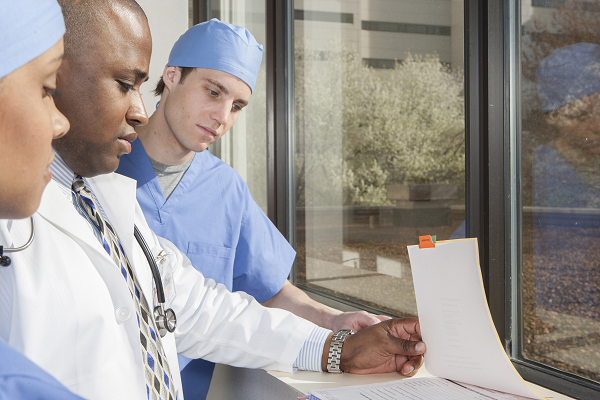Some Known Details About Northeast Medical Institute - New Haven Campus Phlebotomy Course & Cna Class
Some Known Details About Northeast Medical Institute - New Haven Campus Phlebotomy Course & Cna Class
Blog Article
Getting My Northeast Medical Institute - New Haven Campus Phlebotomy Course & Cna Class To Work
Table of ContentsSome Ideas on Northeast Medical Institute - New Haven Campus Phlebotomy Course & Cna Class You Need To KnowTop Guidelines Of Northeast Medical Institute - New Haven Campus Phlebotomy Course & Cna ClassThe Ultimate Guide To Northeast Medical Institute - New Haven Campus Phlebotomy Course & Cna ClassIndicators on Northeast Medical Institute - New Haven Campus Phlebotomy Course & Cna Class You Need To KnowThe smart Trick of Northeast Medical Institute - New Haven Campus Phlebotomy Course & Cna Class That Nobody is DiscussingThe Best Strategy To Use For Northeast Medical Institute - New Haven Campus Phlebotomy Course & Cna Class
The usage of such tools need to be accompanied by various other infection prevention and control methods, and training in their use. Not all safety devices apply to phlebotomy. Before selecting a safety-engineered tool, users should extensively investigate readily available tools to establish their ideal usage, compatibility with existing phlebotomy methods, and effectiveness in safeguarding personnel and clients (12, 33).For setups with low resources, cost is a motoring element in purchase of safety-engineered gadgets. Where safety-engineered devices are not available, knowledgeable usage of a needle and syringe is acceptable.
Among the essential pens of high quality of care in phlebotomy is the involvement and participation of the patient; this is mutually valuable to both the health worker and the individual. Clear information either created or verbal ought to be offered to every patient who goes through phlebotomy. Annex F supplies example message for explaining the blood-sampling procedure to a client. In the blood-sampling room for an outpatient department or center, offer a comfy reclining couch with an arm rest.
The smart Trick of Northeast Medical Institute - New Haven Campus Phlebotomy Course & Cna Class That Nobody is Talking About
Make sure that the indications for blood sampling are plainly specified, either in a created protocol or in recorded guidelines (e.g. in a laboratory type). Accumulate all the equipment required for the procedure and area it within safe and very easy reach on a tray or trolley, making sure that all the things are clearly visible.
Present yourself to the client, and ask the individual to specify their complete name. Check that the laboratory form matches the patient's identity (i.e. match the individual's details with the research laboratory type, to make sure precise identification).
Make the patient comfortable in a supine placement (if possible). The patient has a right to refuse a test at any kind of time before the blood sampling, so it is vital to make certain that the person has recognized the treatment - Phlebotomy Training.
Examine This Report on Northeast Medical Institute - New Haven Campus Phlebotomy Course & Cna Class
Prolong the person's arm and examine the antecubital fossa or lower arm. Situate a blood vessel of a great dimension that shows up, straight and clear. The layout in Section 2.3, shows typical settings of the vessels, yet lots of variants are feasible. The average cubital blood vessel lies in between muscles and is normally one of the most very easy to penetrate.
DO NOT put the needle where veins are diverting, since this raises the opportunity of a haematoma. The blood vessel needs to be noticeable without applying the tourniquet. Situating the vein will assist in figuring out the proper size of needle. Apply the tourniquet regarding 45 finger widths above the venepuncture site and re-examine the vein.
Specimens from central lines carry a danger of contamination or erroneous research laboratory test outcomes. It is appropriate, but not excellent, to draw blood samplings when very first introducing an in-dwelling venous gadget, prior to connecting the cannula to the intravenous liquids.
How Northeast Medical Institute - New Haven Campus Phlebotomy Course & Cna Class can Save You Time, Stress, and Money.
Failing to permit enough contact time increases the risk of contamination. DO NOT touch the cleansed site; in certain, DO NOT position a finger over the capillary to assist the shaft of the revealed needle.
Ask the person to form a fist so the blood vessels are more famous. Get in the vein promptly at a 30 level angle or much less, and remain to introduce the needle along the blood vessel at the easiest angle of entrance - Phlebotomy Training. As soon as sufficient blood has been gathered, release the tourniquet BEFORE taking out the needle
8 Simple Techniques For Northeast Medical Institute - New Haven Campus Phlebotomy Course & Cna Class
Withdraw the needle delicately and use gentle stress to the site with a tidy gauze or completely dry cotton-wool ball. Ask the individual to hold the gauze or cotton woollen in area, with the arm extended and elevated. Ask the client NOT to bend the arm, due to the fact that doing so causes a haematoma.

The Facts About Northeast Medical Institute - New Haven Campus Phlebotomy Course & Cna Class Revealed
Do not press the syringe plunger since extra stress raises the threat of haemolysis. Where feasible, keep the tubes in a shelf and move the rack towards you. Inject downwards right into the suitable coloured stopper. DO NOT eliminate the stopper because it will certainly launch the vacuum cleaner. If the example tube does not have a rubber stopper, infuse exceptionally gradually right into the tube as decreasing the stress and speed used to move the specimen lowers the risk of haemolysis.

Report this page